![Makrokosmos Quartet: Magic Worlds Of Sound (Hat [now] ART) Makrokosmos Quartet: Magic Worlds Of Sound (Hat [now] ART)](https://www.teuthida.com/productImages/misc4/makrokosmosSound.jpg)
Makrokosmos Quartet playing the Crumb piece from which their name derives, along with works by Stefano Gervasoni and Georg Friedrich Haas.
In Stock
Quantity in Basket: None
Log In to use our Wish List
Shipping Weight: 3.00 units
EU & UK Customers:
Discogs.com can handle your VAT payments
So please order through Discogs
Sample The Album:
Ufuk Dorduncu-piano
Bahar Dordunco-piano
Francois Volpe, Sebastien Cordier-percussion
Click an artist name above to see in-stock items for that artist.
UPC: 752156017028
Label: Hat [now] ART
Catalog ID: Hat [now] ART170
Squidco Product Code: 9184
Format: CD
Condition: New
Released: 2007
Country: Switzerland
Packaging: Cardstock Sleeve
Recorded at RSR Studio Ansermet Geneva, IN January, 2007, by Peter Pfister.
"The idea of an ensemble composed of pianos and percussion instruments first came about in Stravinsky's The Wedding. Shortly thereafter, Bartok, who frequently emphasized the percussive aspect of the piano, developed this idea in his orchestral works (Piano Concerto No. 1, Music for Strings, Percussion and Celesta). In his 1937 Sonata for two pianos and percussion, he established a new instrumental archetype which was taken up by subsequent composers, such as the ones represented in this recording. However, for these composers, it isn't so much the rhythmic and dynamic elements which link the piano to the various percussion instruments, as was the case for Stravinsky and Bartok, but rather the full range of sound possibilities-the set of different colors-provoking the idea of a fusion between the two entities. One of the characteristics of the huge diversity of percussion instruments that have been adopted from around the world during the past hundred or so years, is indeed the extraordinary variety of specific tonal qualities, in which the kinds of attacks and resonances-the way sounds appear, resonate, and disappear-play an important part. The works of Crumb, Gervasoni, and Haas are built upon such a range of sounds requiring new arrangements and new ways of articulation. Each work has its own range of colors which constitutes the basic material of the composition. Far from the intrinsic structures which reached their peak in serialism, the organization of pitches is here subsumed by the originality and combination of sounds as such. The acoustic quality as a structural and sensitive element is not produced exclusively by a combination of pitches whatever the complexity, but by a very thorough analysis of sound and dynamics. In Makrokosmos, George Crumb uses archaic modal structures and tonal music quotes, which also can be found in Georg Friedrich Haas' second piece, where tonal chords seem to be lost and found objects."-Philippe Albera, from the liner notes"

The Squid's Ear!
Artist Biographies
Related Categories of Interest:
Hat Art
Compositional Forms
Avant-Garde
Track Listing:
George Crumb (1929)
Music for a Summer Evening for two amplified pianos and percussion
1. Nocturnal Sounds (The Awakening) 5:55
2. Wanderer-Fantasy 5:19
3. The Advent 8:17
4. Myth 4:45
5. Music of the Stary Night 12:09
Stefano Gervasoni (1962)
6. Sviete Tihi - Capriccio dopo la Fantasia per 2 pianoforti e 2 percusionisti 13:27
Georg Friedrich Haaas (1953)
7. Schichtung, schwingung, abbruch 12:11
8. In memoriam richard h. stein 6:10
9. "... indem ich die unsichtbare protagonistin vor den vorhang hole..." 3:09
Hat Art
Compositional Forms
Avant-Garde
Search for other titles on the label:
Hat [now] ART.







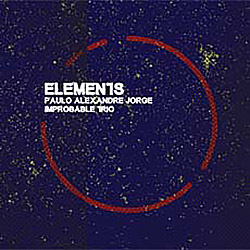


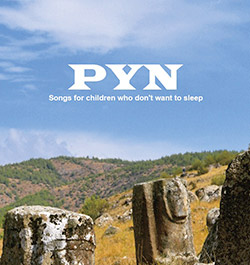









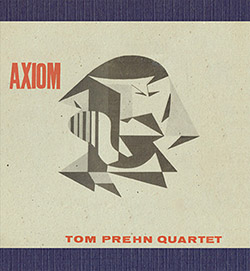




















![Barker / Parker / Irabagon: Bakunawa [VINYL]](https://www.teuthida.com/productImages/misc4/35533.jpg)
![Blaser, Samuel / Marc Ducret / Peter Bruun: Dark Was The Night, Cold Was The Ground [VINYL 10-inch]](https://www.teuthida.com/productImages/misc4/35492.jpg)










![Warren, Kenny (Warren / Hoffman / Ellman): Sweet World [VINYL]](https://www.teuthida.com/productImages/misc4/35451.jpg)


![Blake, Ran / Dave Knife Fabris: Live Amsterdam 2006, First Visit [CD + POSTCARDS]](https://www.teuthida.com/productImages/misc4/35275.jpg)
![Sanna, Claudio: Compositori Sardi Contemporanei II [2 CDs]](https://www.teuthida.com/productImages/misc4/35317.jpg)












![Nevai, Nandor: <<The PRICE of FRONTIER>> Book 1: FULK [BOOK + 4 CDs]](https://www.teuthida.com/productImages/misc4/35464.jpg)
![Nevai, Nandor: <<The PRICE of FRONTIER>> Book 2: MARTIAL [BOOK + 4 CDs]](https://www.teuthida.com/productImages/misc4/35465.jpg)
![Nevai, Nandor: <<The PRICE of FRONTIER>> Book 3: JASSOM [BOOK + 4 CDs]](https://www.teuthida.com/productImages/misc4/35466.jpg)
![Nevai, Nandor: <<The PRICE of FRONTIER>> Book 4: HARD-WON [BOOK + 4 CDs]](https://www.teuthida.com/productImages/misc4/35467.jpg)

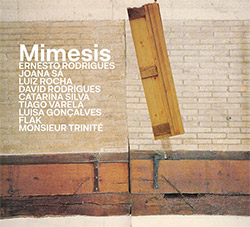




![DNS: Taking Big Bites Of The Khandas Three Cafes Deep [2 CDs]](https://www.teuthida.com/productImages/misc4/35334.jpg)




![Cleaver, Gerald: The Process [VINYL]](https://www.teuthida.com/productImages/misc4/34966.jpg)




![Alva Noto: HYbr:ID II [VINYL 2 LPs]](https://www.teuthida.com/productImages/misc4/35201.jpg)

![Baron, Derek / Luke Martin: Distinct and Concealed [CASSETTE + DOWNLOAD]](https://www.teuthida.com/productImages/misc4/35079.jpg)

![Lyle, Erica Dawn : Colonial Motels [CASSETTE + DOWNLOAD]](https://www.teuthida.com/productImages/misc4/35080.jpg)







![Alva Noto: HYbr:ID III [VINYL 2 LPs]](https://www.teuthida.com/productImages/misc4/35011.jpg)
![Kubisch, Christina / Trondheim Voices: Stromsanger 2022 For Six Voices And Electromagnetic Waves [VINYL]](https://www.teuthida.com/productImages/misc4/34628.jpg)








![Zurria, Manuel: Fame di Vento [3 CDs]](https://www.teuthida.com/productImages/misc4/35167.jpg)

![Granberg, Magnus / Nattens Inbrott / Skogen: Holde Traume, Kehret Wieder! [2 CDs]](https://www.teuthida.com/productImages/misc4/35038.jpg)
![Frey, Jurg: Outermost Melodie [2 CDs]](https://www.teuthida.com/productImages/misc4/35039.jpg)

![Pavone, Jessica: Reverse Bloom [VINYL]](https://www.teuthida.com/productImages/misc4/34895.jpg)




![Modney (Modney / Wooley / Gentile / Roberts / Pluta / Symthe / ...): Ascending Primes [2 CDs]](https://www.teuthida.com/productImages/misc4/34852.jpg)








![Elephant9 with Terje Rypdal: Catching Fire [VINYL 2 LPs]](https://www.teuthida.com/productImages/misc4/35355.jpg)
![Deerlady (Obomsawin, Mali / Magdalena Abrego): Greatest Hits [VINYL]](https://www.teuthida.com/productImages/misc4/34876.jpg)




![Haino, Keiji: Black Blues [2 CDs]](https://www.teuthida.com/productImages/misc4/35109.jpg)



![Surplus 1980: Illusion of Consistency [CD]](https://www.teuthida.com/productImages/misc4/35069.jpg)
![Staiano, Moe: Away Towards the Light [VINYL + DOWNLOAD]](https://www.teuthida.com/productImages/misc4/35037.jpg)
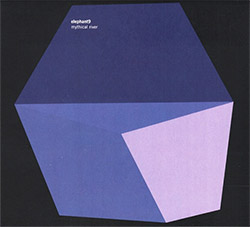



![Caveira (Gomes / Sousa / Abras / Ferrandini): Ficar Vivo [VINYL]](https://www.teuthida.com/productImages/misc4/34643.jpg)
![Gregg, J. J. / David Van Auken: Lunar Prairie [CD w/ DOWNLOAD]](https://www.teuthida.com/productImages/misc4/34611.jpg)

![Coultrain: Mundus [VINYL]](https://www.teuthida.com/productImages/misc4/32439.jpg)
![Mattin: Songbook #6 [VINYL]](https://www.teuthida.com/productImages/misc4/27317.jpg)
![Punkappella: Wake Up [7-inch VINYL]](https://www.teuthida.com/productImages/misc4/17519.jpg)
![Residents, The: WARNING: UNiNC.: Live And Experimental Recordings 1971-1972 [VINYL 2 LPs]](https://www.teuthida.com/productImages/misc4/31521.jpg)
![Coultrain: Phantasmagoria [VINYL]](https://www.teuthida.com/productImages/misc4/30142.jpg)
![Lennon, Sean Ono: Asterisms [VINYL]](https://www.teuthida.com/productImages/misc4/34517.jpg)

![Rotem Geffen: The Night Is The Night [VINYL]](https://www.teuthida.com/productImages/misc4/34631.jpg)
![Coley, Byron: Dating Tips for Touring Bands [VINYL]](https://www.teuthida.com/productImages/misc4/17906.jpg)

![Lost Kisses: My Life is Sad & Funny [DVD]](https://www.teuthida.com/productImages/misc4/lostKissesDVD.jpg)